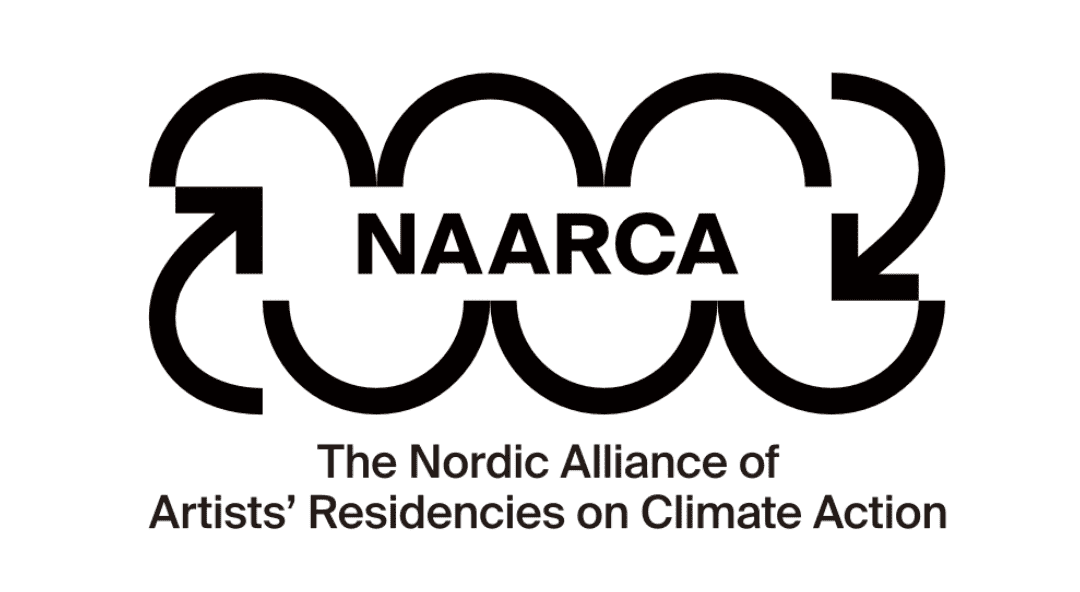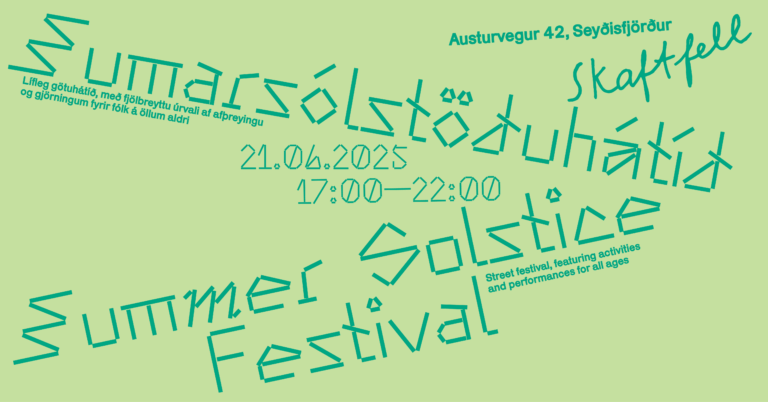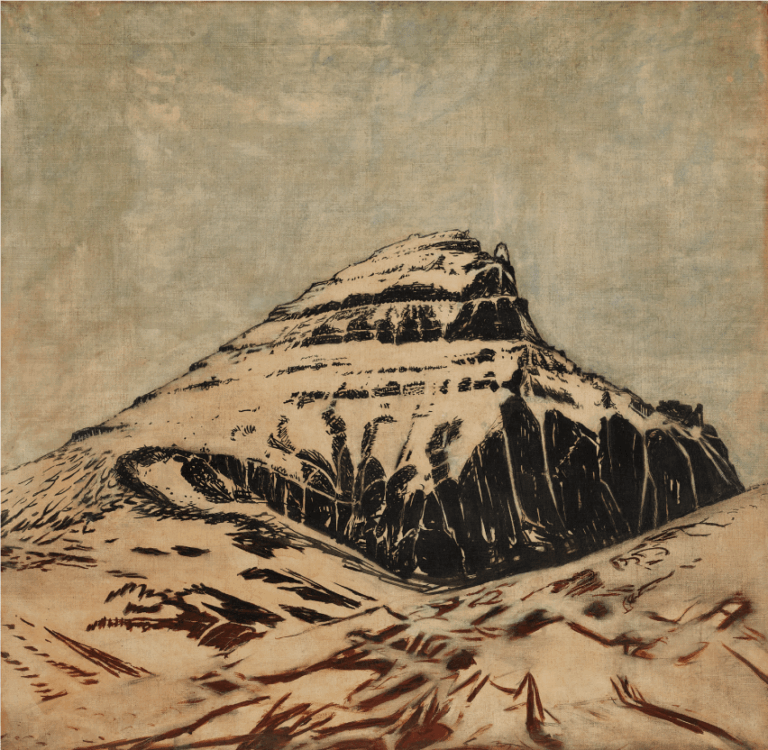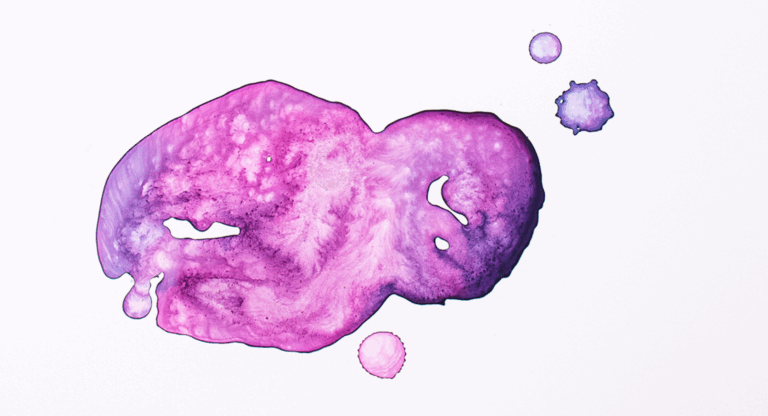September 17 – November 20, 2022, Skaftfell gallery
Opening on September 17, 16:00-18:00 in Skaftfell and 18:00-19:30 in Herðubío (film screening)
Gallery talk with the artist on September 18, 14:00
All events are free of charge.
Opening times: Tue–Sun 17:00–22:00, Mon closed
Rikke Luther’s solo exhibition at Skaftfell presents the artist’s ongoing research into political, societal and environmental connections between mineral extraction, modernity, soil erosion and planetary change. Her work explores the impacts of sand mining, the carbon-intense production of concrete, and the effects of rising temperatures on the stability of the ground we live on. On Moving Ground offers an insight into the artist’s wide-angled research methodology and artistic output, from film to large-scale drawings to archival material, scientific data, text and photography.
In two vitrines the artist presents a selection of notes and photographs from field studies. They were gathered for projects in Greenland, Brazil and Japan between 2016-2021 and still inform her ongoing research into the subject of mud. Together with two early works, Constructing the State # I. Concrete and the Political Economy of Construction, Japan (2004) and Constructing the State # II. Concrete and the Political Economy of Construction, Mexico (2005), the notes encourage the viewer to draw connections between developments in different parts of the world that foreshadow or express the destabilization of surfaces, habitats and ideas. Observing human activity and its implementation in the new uncertainties of planetary change, Luther’s longterm research describes over time the emerging narrative of humanity’s existence within deeply entangled global processes that can no longer be separated into “cultural” and “natural”, but are becoming experiential as one and the same intricate reality.
Produced as a part of the scenography for the tap dance show The Sand Bank (2018), Luther’s three large-scale drawings on canvas map the implication of sand as a raw material in modern politics, culture and economy. The discovery of concrete and modern architecture’s insatiable appetite for it, along with the rise and expansion of Silicon Valley’s products have led to a global skyrocketing of the demand for sand. The exploitation of the planetary sandbank is deeply linked to the troubled history of the 20th century, its utopias and dystopias. A line can even be traced between Cold War intelligence tactics and today’s practice of deep sea mining. Meanwhile, the emerging global scarcity of sand will participate in shaping the history of the century we live in.
The film Concrete Nature: Planetary Sand Bank (2018) “explores the political history of concrete and the social structures it embodies. Rikke Luther’s dialogue weaves a broad range of research material into a narrative of personal exploration. Her film draws out the cultural threads that lay between critical moments of modernity; from concrete’s ‘discovery’ in the first decades of the 19th century, through ideological hopes of Modernists, into our era of sand scarcity, and investor’s hopes for a future, post-apocalyptic, 3D-printed concrete society in space. The film was shot in and around the MIT campus, Cambridge, Boston, New York, Hudson River, High Fall, London, and includes historical images. It explores concrete buildings that were politicized before they were constructed, before an architect lent them their particular voice; buildings whose political speech is now being overwritten, rewritten, and erased, by the shifting stands of ideology and environment.” (Luther) Trailer
The exhibition opening is accompanied by an exclusive cinema screening of Luther’s latest essay film, which is still in process and will be premiered later in 2022: “Concrete: The Great Transformation (2019-) is a follow up to 2018’s ‘Concrete Nature: Planetary Sand Bank’. The film mixes images with a commentary based on historical research and personal narrative. The investigation begins with visits to three historical extraction sites, relating to flint, coal, and limestone, before moving on to examine a site where the Earth’s materials are being used to simulate ‘lunar regolith’. These visits ground an exploration of past, present and future attempts to mix human imagination with earthly materials, ending with technological hopes for 3D-printing concrete for future interplanetary settlements.“ (Luther)
Curated by Julia Martin.
About the artist
Rikke Luther’s current work explores the new interrelations created by environmental crisis as they relate to landscape, language, politics, financialisation, law, biology and economy, expressed in drawn images, photography, film, and pedagogical strategies. She has held teaching positions in Denmark and given numerous guest lectures around the world. Her work has been presented in Biennales and Triennales [such as Venice, Singapore, Echigo-Tsumari, Auckland and Göteborg], museums [such as Moderna Museum, Kunsthaus Bregenz, The New Museum, Museo Tamayo, Smart Museum], exhibitions [like Beyond Green: Towards a Sustainable Art, 48C Public.Art.Ecology, Über Lebenskunst and Weather Report: Art & Climate Change] and film festivals [like CPH:DOX* – Copenhagen International Documentary Film Festival]. In 2016 Luther created a new work for the 32nd Bienal de São Paulo and has been working solo since. Prior to that, Luther worked exclusively in art collectives. She was a co-founder of Learning Site (active 2004 to 2015) and of N55 (active with original members from 1996 through to 2003).
In 2021 Luther defended the PhD Concrete Aesthetics: From Universal Rights to Financial Post-Democracy. It will be published in 2022/23 with extended texts by Esther Leslie and Jaime Stapleton. https://rikkeluther.dk/PhD
Rikke Luther (DK) is in residency at Skaftfell in September 2022 to conduct field studies for her current research project More Mud, producing a new film by 2024. The project is commissioned by the Nordic Alliance of Artists’ Residencies on Climate Action (NAARCA), of which Skaftfell is a member. It is also part of Luther’s postdoctoral research The Ocean-Lands: Mud Within the Earth System, conducted at the Queen Margrethe’s and Vigdís Finnbogadóttir´s Interdisciplinary Research Centre on Ocean, Climate, and Society (ROCS) and at The GLOBE Institute / Danish Natural History Museum / Center for Macroecology, Evolution and Climate.
Image: Rikke Luther, More Mud, Kangerlussuaq, Greenland, 2021 (detail)
Supported by:






